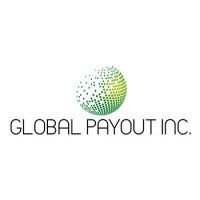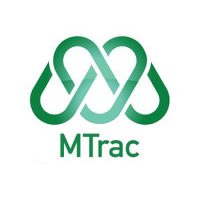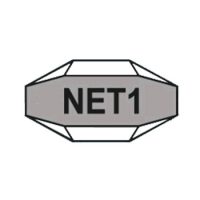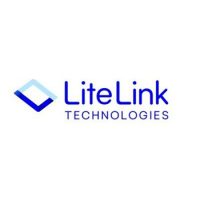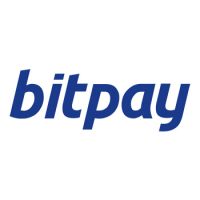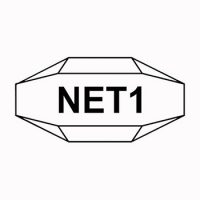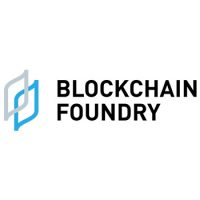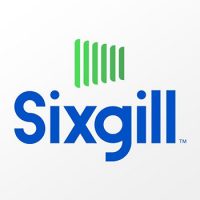Blockchain
The Death of the $2 Trillion Auto Industry Will Come Sooner Than Expected

Tesla is now bigger than Exxon. BlackRock has taken over Wall Street. Even unprofitable, Uber and Lyft are threatening to overtake the $1-trillion auto industry and they’ve only scratched the surface. Now, the worldwide $2-trillion auto industry is next in line for disruption. Mentioned in today’s commentary includes: BlackRock, Inc. (NYSE: BLK), Uber Technologies, Inc. (NYSE: UBER), Facebook, Inc. (NASDAQ: FB), Alphabet Inc. (NASDAQ: GOOGL), Microsoft Corporation (NASDAQ: MSFT).
This is the Fourth Industrial Revolution–kicked into high-speed gear by a global pandemic. And it’s all about tech-driven freedom.
For the auto industry, in particular, it’s a double threat: Tesla is now the most valuable car maker “of all time“. And with combined market caps of some $70 billion, Uber and Lyft are also severely disrupting the giant auto industry.
Tesla is worth almost $225 billion (or quarter of a trillion dollars), while the top three American automakers–GM, Ford and Chrysler–are worth around $70 billion–the same as Uber and Lyft. But while Tesla’s EV threat to the industry is clear, the ride-sharing giants’ business models are broken. Now, they may be about to find themselves on the wrong end of the disruption.
The newest threat to Uber, Lyft and the trillion-dollar personal ownership auto industry comes out of Canada’s “Silicon Valley”. It’s on the right side of history: In lock-step with Tesla’s EVs and BlackRock’s “impact investing” takeover of Wall Street …
Launched in 2019, Facedrive (FD.V) (FDVRF) is leading the evolution of shared mobility–from EV and carbon-offset ride-sharing to acquisition-hungry food delivery, healthcare services and even COVID tracing tech.
It’s got the new business model to lure in big capital that’s tired of the giants’ cash burn, bad press and endless unprofitability. It views shared mobility as much more than a ride: This is about technology, and Facedrive has launched multiple revenue streams that take advantage of the rider relationship. Now, it’s starting to go international.
A series of smart acquisitions and new service launches have positioned it to be a key challenger to the shared mobility throne. But it’s about to get even more exciting, with a government endorsement for high-tech COVID tracing and new partnerships on the boardroom deal table …
Here are 5 reasons to keep a close eye on this burgeoning sector right now:
#1 This Is What Big Capital Wants
There’s a reason BlackRock is blowing Wall Street out of the water right now–sustainable investing. It’s the ethical squeeze of the century because it’s not just about the moral high ground anymore–it’s about making money.
BlackRock (BLK) has now replaced Goldman Sachs to become the most important banking company in the world. BlackRock is all about technology, and all about mitigating risk through sustainable companies. With well over $7.4 trillion in assets under management, and clients in over 100 different countries, it’s safe to say that BlackRock has played a vital role in shifting investors’ perspectives in the ESG field.
And savvy companies are following suit. In fact, where Facedrive launched its coup. Facedrive’s next-gen ride-sharing is the first to offer customers a choice for every ride; whether they want an EV, a hybrid, or a conventional car. Then it offsets CO2 by planting trees along the way.
The Canadian startup has positioned itself to help solve ride-sharing’s environmental problem by changing its footprint, —and aims to do so without sacrificing profit, which Uber has never even made anyway.
Globally each year, plants remove about 25% of the carbon emissions produced by human activities such as burning fossil fuels while a similar amount ends up in the oceans. So, Facedrive is getting back to Mother Nature–and millennials and investors are loving it.
#2 Conscious Healthcare
Facedrive engineered another major coup last month when it launched TraceSCAN, a homegrown Canadian COVID-19 tracing solution and the only viable application that features Bluetooth wearable tech integration. Right off the bat, it partnered with LiUNA–one of the largest labor unions in the world–to help protect the health and safety of its 130,000 members and their families in Canada.
Now, solidified its power as the leader in this space in Canada, with a government support to deploy TraceSCAN.
Not only did Facedrive’s TraceSCAN just get the official endorsement from the Government of Ontario as technology that can effectively help trace coronavirus infections, but the government is encouraging its deployment across all major sites–from Parliament Hill’s major renovation project in Ottawa, to corporate offices, sporting events, healthcare facilities, long-term care facilities and outdoor venues.
#3 Innovative Revenue VS Irresponsible Cash Burn
Facedrive (FD.V) (FDVRF) isn’t just challenging Uber in the ride-sharing space. And it isn’t just the mobile leader of COVID-19 tracing tech in Canada–it’s now challenging the food delivery giants, too.
Uber (UBER) is the de facto leader in this field currently thanks to its Uber Eats branch. And now it’s looking to expand in big ways. Earlier this year, it was prepared to pay a premium for the Grubhub–the delivery service with the biggest US market share. But that deal fell through and now Uber has to settle for potentially taking over the much smaller Postmates.
Facedrive is also pursuing aggressive expansion in this space–but not paying premium prices like Uber has done.
In May, Facedrive entered into a binding term sheet to acquire the assets of Foodora Canada, a subsidiary of giant Delivery Hero–the $20-billion multinational food delivery service. This could turn out to be another major coup for Facedrive because Delivery Hero is one of the best–operating food delivery services in 40 countries and services more than 500,000 restaurants with a brand that doesn’t have the negative baggage of Uber Eats or DoorDash.
This new face of “sharing” is cutting a food delivery acquisition deal for what is expected to be a reasonable price. And it’s acquiring from Delivery Hero–the only company with a good reputation in this business, earning it the moniker of “United Nations of food delivery”. That’s because Delivery Hero spans 28 brands in over 40 countries. And it makes restaurants happy instead of gouging them.
Overnight, Facedrive is set to position itself into the top echelon of Canadian food delivery services. Then targeting international expansion. The winner of this war will likely be the new sharing business model that defies the out-of-control cash burn, broadens the revenue potential and wins the hearts and minds of every stakeholder in the chain, including drivers and restaurants.
#4 International Branding
What millenials know, and what millennials want is this: A company that recognizes that ride-sharing isn’t going to work unless it’s a lifestyle, not just a way to get from Point A to Point B.
It has to offer more, be more convenient, responsible and have a positive impact on the world around one. That’s what the giants just don’t get. They should, because millennial money is big money. Millennials have changed the future of investing.
That old adage that any publicity is good publicity no longer holds water. Bad publicity now resonates with massively powerful shareholder activism.
The most often used phrase about the Uber brand at this point is that it’s a service everyone loves to hate and hates to love. Now, with Facedrive, riders have a choice, and that choice is getting ready to go international.
#5 Where Canada Trumps Silicon Valley
As we’ve already seen in Silicon Valley, tech giants across the board are diving head-first into the sustainability push. Facebook (FB), for its part, has taken an innovative approach in its efforts to reduce its carbon footprint. Its data centers are some of the most resource-efficient on the planet, and it’s become an example for the entire industry. And by the end of the year, it will have 100% of its data centers running on green energy. A massive and ambitious undertaking. But if anyone can do it, it’s Facebook.
Not to be outdone, Google (GOOGL) is jumping on the green bandwagon, as well. It’s focus is on raising the bar for smarter and more efficient use of the world’s limited resources. It is building sustainable, energy-efficient data centers and workplaces. It is also harnessing artificial intelligence to utilize energy more efficiently.
While Google completely rethinks the game for its own operations, it is also creating a completely sustainable supply chain, working with companies around the globe to help them integrate their own sustainable systems.
Microsoft (MSFT)is one of the most innovative and well-known companies within the tech sector, but its Windows platform is the most widely used operating system on the planet. First launched in 1985, Windows has shaped what is expected from a personal home computer.
But Microsoft is appealing to investors for more just its Windows platform. It is diving head first into an entirely new market. With key partnerships utilizing and implementing blockchain technology, the company’s upside could have huge potential as the tech takes off.
Not only has it always been on the cutting edge of innovation, it’s taking a serious stance on the climate crisis. In fact, it’s pushing so hard that it is aiming to be carbon NEGATIVE by 2030. That’s a huge pledge. And if anyone can do it, it’s Microsoft.
But the United States’ crackdown on immigration has driven innovation north of the border. Ontario’s Waterloo “Technology Triangle” is pumping out some of the most innovative new tech these days. And it’s positioned to challenge Silicon Valley in both environmentally conscious and tech driven solutions with bold new startups such as Facedrive, whose Chairman and CEO, Sayan Navaratnam, is all about identifying and running with trends before they become mega. He saw where Uber and Lyft would trip up years before it became clear to everyone else.
That’s a lot of potential revenue streams that Facedrive (FD.V) (FDVRF) is latching onto. In the realm of “shared mobility”, the possibilities are almost endless. Its taking its “people and planet first” business model–the one that is in lockstep with the $30-billion ESG investing trend–international.
By. Michael Drew
** IMPORTANT, BY READING OUR CONTENT YOU EXPLICITLY AGREE TO THE FOLLOWING. PLEASE READ CAREFULLY **
Forward-Looking Statements
This publication contains forward-looking information which is subject to a variety of risks and uncertainties and other factors that could cause actual events or results to differ from those projected in the forward-looking statements. Forward looking statements in this publication include that the demand for ride sharing services will grow, and transportation as a service industry will reach $8 trillion; that the demand for environmentally conscientious ride sharing services companies in particular will grow quickly and take a much larger share of the market; that Facedrive’s TraceScan app will be adopted by other parties including government; that Facedrive’s marketplace will offer many more sustainable goods and services, and grow revenues outside of ride-sharing; that new products co-branded by Bel Air and Facedrive will sell well; that Facedrive can achieve its environmental goals without sacrificing profit; that Facedrive Foods will expand to other regions outside southern Ontario soon and will close its purchase of Foodora; that Facedrive will be able to fund its capital requirements in the near term and long term; and that Facedrive will be able to carry out its business plans. These forward-looking statements are subject to a variety of risks and uncertainties and other factors that could cause actual events or results to differ materially from those projected in the forward-looking information. Risks that could change or prevent these statements from coming to fruition include changing governmental laws and policies; the company’s ability to obtain and retain necessary licensing in each geographical area in which it operates; the success of the company’s expansion activities and whether markets justify additional expansion; the TraceScan app may not be adopted because of better apps offered by competitors or because of expense the ability of the company to attract a sufficient number of drivers to meet the demands of customer riders; the ability of the company to attract drivers who have electric vehicles and hybrid cars; the ability of Facedrive to attract providers of good and services for partnerships on terms acceptable to both parties, and on profitable terms for Facedrive; that the products co-branded by Facedrive may not be as merchantable as expected; that Facedrive does not close the purchase of Foodora and even if it does, the purchase does not bring the customers, partnerships or revenues expected; the ability of the company to keep operating costs and customer charges competitive with other ride-hailing companies; and the company’s ability to continue agreements on affordable terms with existing or new tree planting enterprises in order to retain profits. The forward-looking information contained herein is given as of the date hereof and we assume no responsibility to update or revise such information to reflect new events or circumstances, except as required by law.
Blockchain
Saakuru Leads the Gasless Blockchain Revolution, Disrupting the Industry
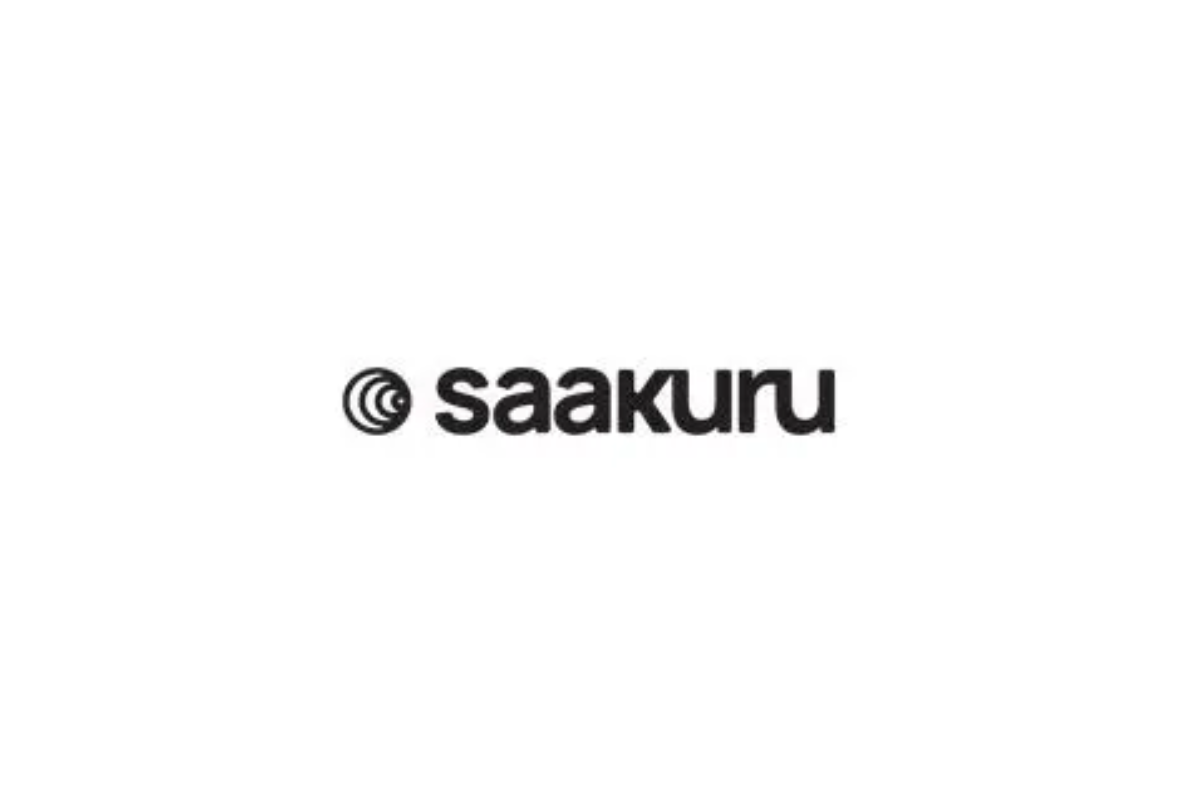
Saakuru has recently achieved significant milestones in its development, positioning itself as a leader in the gasless blockchain revolution that is reshaping the industry. Within just nine months of its launch, the consumer-centric L2 protocol has entered the top 5 brands in its niche and records over 1.44 million weekly users, according to data from DappRadar.
The project is gearing up for the official launch of its Saakuru token ($SKR) by the end of April, supported by a successful private funding round that raised $2.4 million. Saakuru Protocol stands as a pioneering advocate of gasless technology, aiming to accelerate the adoption of Web3 into the mainstream by enhancing the user experience and reducing costs for both developers and end users.
Unlike traditional blockchain networks, which often suffer from high gas fees and security issues, Saakuru Protocol leverages Oasys High-Speed Optimistic Rollups to create a public-permission, gas-less L2 blockchain. This innovative approach eliminates gas fees, improves user experience, and introduces new tokenomics models, enabling the development of versatile decentralized applications with higher security standards, cost-effectiveness, and ease of use.
The Saakuru token serves as a multi-purpose token within the protocol, providing utility and governance. Its advanced burning mechanism gradually reduces the token supply while potentially increasing its value. The token is integrated into all operational layers of the Saakuru protocol:
1. Developer Layer (Saakuru Labs): Provides products and services with proprietary business models, burning 10% of profits.
2. DeFi Layer (Taffy DEX): Utilizes Taffy DEX technology, where 0.005% of transaction fees are converted to SKR tokens and burned.
3. Governance Layer: Enables token holders to participate in protocol governance, with 5% of tokens used for governance initiating the review process being burned.
4. Protection Layer: In the event of triggering the protection mechanism, SKR tokens are burned, with 3% of saved tokens being burned.
Through these innovative features and layers, the Saakuru token and protocol aim to drive adoption, enhance functionality, and provide sustainable value for users and stakeholders alike in the evolving blockchain landscape.
Source: finance.yahoo.com
The post Saakuru Leads the Gasless Blockchain Revolution, Disrupting the Industry appeared first on HIPTHER Alerts.
Blockchain
RFK Jr. Proposes U.S. Budget Transparency with Blockchain

RFK Jr.’s innovative proposal seeks to revolutionize how the American public interacts with the national budget, leveraging blockchain technology to provide unprecedented levels of transparency and accountability.
Under this plan, every detail of the U.S. budget would be recorded on a blockchain ledger, accessible to the public 24/7. RFK Jr. highlighted the transformative potential of blockchain by emphasizing that “Every American can look at every budget item in the entire budget, anytime they want, 24 hours a day.” This approach aims to engage citizens in the fiscal management of the country, with the goal of ensuring that every dollar spent is visible and accountable.
The proposal promises several significant benefits. Firstly, it could substantially reduce corruption and misuse of funds by enabling real-time monitoring of budget allocations. Secondly, it could strengthen the relationship between citizens and their government, potentially fostering greater trust and civic engagement.
However, implementing such a system presents challenges. One major obstacle is the immense amount of data involved in transcribing the entire national budget onto a blockchain. This requires a highly robust and scalable blockchain infrastructure. Additionally, ensuring universal access and usability of this technology for all Americans may require extensive educational initiatives and improvements in digital infrastructure.
Moreover, there are concerns regarding privacy and security. While blockchain offers inherent security features, the continuous updating and review of vast amounts of data could pose vulnerabilities that need to be addressed to prevent breaches.
Nevertheless, the potential benefits of RFK Jr.’s proposal are compelling. If successful, it could serve as a model for other nations, demonstrating how blockchain can enhance transparency and public participation in government. Ultimately, this initiative has the potential to redefine the standards for accountability and transparency in government spending, marking a significant step forward in the management of public resources.
Source: altcoinbuzz.io
The post RFK Jr. Proposes U.S. Budget Transparency with Blockchain appeared first on HIPTHER Alerts.
Blockchain
$60 Million USDT Already Issued On TON, Great Start, Says CEO

Tether (USDT), the world’s largest stablecoin, has swiftly entered The Open Network (TON) with $60 million worth of USDT already deployed on the blockchain.
The collaboration between Tether and the TON Foundation was announced just two days earlier at the Token2049 conference in Dubai.
USDT’s Strong Start on TON
Within a short span, $60 million worth of USDT has been issued on The Open Network (TON), positioning the blockchain as the 11th largest out of 16 blockchains supporting USDT. This significant milestone follows Tether’s announcement of its partnership with the TON Foundation during the Token2049 conference. Tether’s CEO, Paolo Ardoino, expressed satisfaction with the collaboration, initially reporting $35 million worth of USDT issuance, which has since been updated to $60 million in the Tether Transparency Report.
This integration holds considerable implications for Telegram users, offering instant and free cross-border payments. With USDT now available on TON, users can seamlessly conduct transactions without requiring a blockchain address or downloading separate applications. Telegram emphasizes that this integration will streamline money transfers, likening it to sending a direct message.
Fully Integrated On-Ramps
USDT on TON will seamlessly integrate with major fiat currencies, ensuring convenient on-ramping for users. Additionally, plans for off-ramping functionalities are underway, enabling users to convert USDT back to their preferred fiat currency and withdraw it to their bank account or card. Despite TON’s recent addition, a significant portion of USDT’s $109.8 billion circulating supply remains on the Tron Network, accounting for around $57 billion, followed by Ethereum with approximately $51 billion in USDT. Ethereum’s share has decreased as Tether seeks to mitigate Ethereum’s high network fees. Meanwhile, Solana hosts $1.9 billion worth of USDT.
Market Dominance
USDT continues to dominate the stablecoin market, holding an impressive 69% share valued at approximately $159.5 billion. Its closest competitor, Circle’s USD Coin (USDC), commands around 21% of the market, with $33 billion in circulation. The announcement also sparked a positive reaction in the price of Toncoin (TON), witnessing a 22% increase initially, although it quickly reverted to previous levels. Currently, TON is trading at $6.16, representing a 1.59% decline over the past 24 hours.
Source: cryptodaily.co.uk
The post $60 Million USDT Already Issued On TON, Great Start, Says CEO appeared first on HIPTHER Alerts.
-

 Blockchain7 days ago
Blockchain7 days agoBlockchain Transforming Travel: Quantum Temple’s Innovative Venture
-

 Blockchain4 days ago
Blockchain4 days agoPhoenix Group Engages BHM Capital as Liquidity Provider to Boost ADX Liquidity and Enhance Market Dynamics
-

 Blockchain7 days ago
Blockchain7 days agoBybit and World Leaders Forge Major Alliance to Direct Web3 for Social Good
-

 Blockchain5 days ago
Blockchain5 days agoQuantum eMotion Files a Patent for Quantum-based Blockchain Wallet Under the Patent Cooperation Treaty (PCT)
-

 Blockchain Press Releases5 days ago
Blockchain Press Releases5 days agoCanaan Shines at Blockchain Life 2024 in Dubai
-

 Blockchain Press Releases5 days ago
Blockchain Press Releases5 days agoBybit Institutional Report 2024: Institutions Become Bullish and Eye Challenger Chains, while VC Funding Resurges for Infrastructure, Gaming, and AI
-

 Blockchain5 days ago
Blockchain5 days agoElizabeth Warren Urges Treasury Secretary Yellen to Implement Strong AML/CFT Measures for Stablecoins
-

 Blockchain Press Releases6 days ago
Blockchain Press Releases6 days agoBybit and Franck Muller Partner with Sidus Heroes to Launch Cosmic Gears: A Pioneering Web3 Game with a $250,000 Prize Pool and Exclusive Watch Collection

















